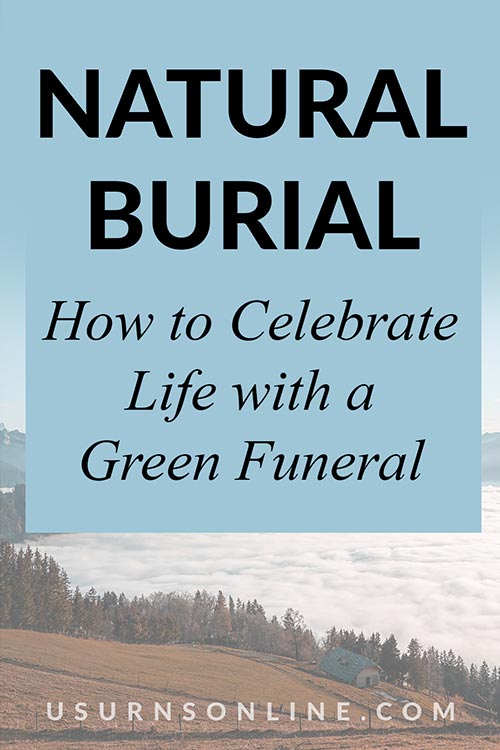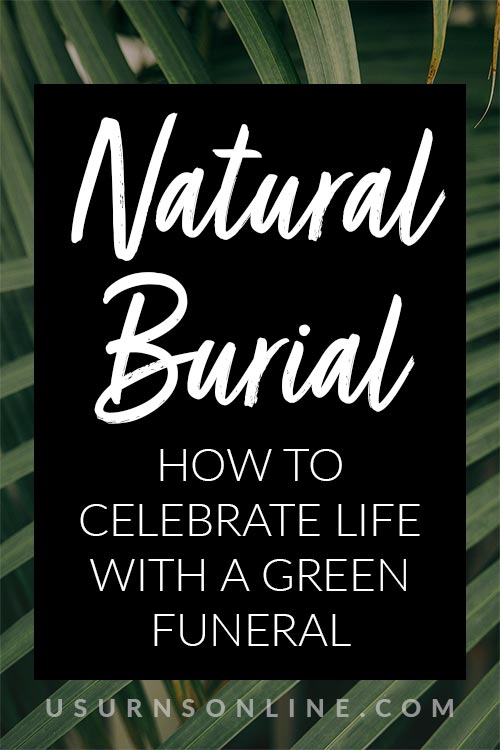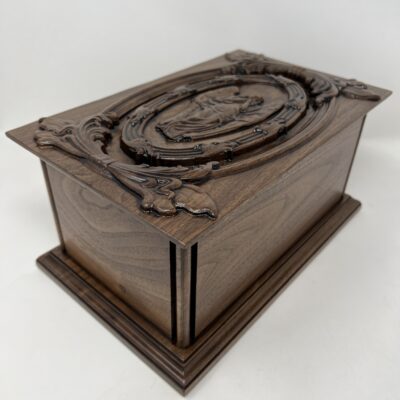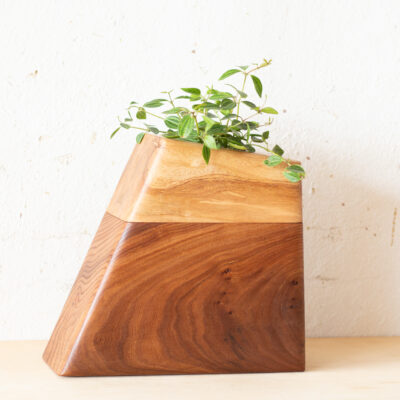Natural burials are becoming more popular. People are concerned about our environment and are finding new ways to conserve it.
Do you have questions about natural burials? Do you wonder if it’s for you? Or maybe you are one of the many who have never heard of green funerals and you have the more basic question of, What is natural burial?
We have designed this article to give you as much information as we can. As you continue reading, you learn what you need to know to be able to make an informed decision for yourself or a loved one.
Our website is supported by our users. We sometimes earn a commission when you click through the affiliate links on our website. See our privacy policy & disclosures for more information.
What is Natural Burial?
Natural burials do not use chemicals to preserve the body, minimize the use of additional products, and attempt to lay the body to rest without negatively affecting the environment.
Practically speaking, this means that the decedent is not embalmed. They are buried simply, either with a biodegradable and naturally-made casket or burial shroud, or nothing at all.
Natural burial literally refers to the actual burial process. This includes the opening and closing of the plot (often dug by hand) along with the preparation of the remains (no embalming) and how they are placed into the burial plot and memorialized (no marker, or a simple natural stone or planted tree).
Related: Funeral Planning Checklist
Natural burial vs green burial: What’s the difference?
A natural burial and a green burial are often thought to be the same thing. Although the two are similar, they are actually two different types of burial options.
“Green burial” refers to the burial process AND the cemetery in which the burial takes place. For example, a “green cemetery” doesn’t use artificial pesticides. In addition, none of the bodies buried in a green cemetery can be embalmed or buried in a traditional casket.
Urns Made in the USA
A natural burial can occur within a traditional cemetery, where embalming and metal caskets are common; in comparison, a green burial requires a green cemetery.
Why do people choose natural burial?
People choose a natural burial for different reasons.
- Natural burial is more economical in comparison to traditional burial.
- It is environmentally friendly.
- The decedent is not embalmed.
- They find comfort in their body “returning to nature.”
- Burial fees are used to cover land protection and preservation.
Natural burial vs. traditional burial: What’s the difference?
Here is a simple chart comparing traditional burial to green or natural burial.
| Traditional | Green | |
| Embalming | Yes | No |
| Casket | Metal or wood | Biodegradable and made from natural materials with no metal components or simply wrapped in a burial shroud |
| Headstone | Yes | No; natural flat rocks or trees used as markers, GPS if available |
| Vault or grave liner | Yes | No |
| Cemetery | Cultivated and landscaped | Natural environment with minimal interference |
| Burial | Within 7 days | Within 48 hours |
| Permanent land usage | Yes | No |
| Cost | $7,000-$12,000 | $2,000-$4,000 |
Learn more about each of these topics here:
- Embalming Alternatives
- Funeral Costs
- Funeral & Burial Timeline
- Choosing a Cemetery
- Plant a Tree in Memory
Why are concrete and stone vaults, liners, and headstones not permitted with green burial?
These materials themselves are generally natural, aside from any finishes applied.
Despite this, the process used to quarry, create, and transport these funeral accessories uses a massive amount of energy, and thus is avoided for natural burials.
Are natural burials cheaper?
Natural burials cost an average of $2,000 to $4,000. This figure includes a burial plot, interment fees, and a shroud or environmentally safe casket.
A traditional funeral costs much more – with the average ranging from $7,000 to $12,000. It will include more products and services, which use up resources and energy, as well as a traditional burial with casket and vault.
Alternatively, natural burial offers substantial savings along with superior benefits for the environment.
Are natural burials legal?
Yes, natural burials are legal in all 50 states. Some states have restrictions:
- Arkansas: You must either be buried in an established cemetery (a green cemetery qualifies), or apply for a home burial permit.
- California: Established cemetery or apply for home burial permit.
- Indiana: Established cemetery or apply for home burial permit.
- Louisiana: Established cemetery or apply for home burial permit.
- Washington: Established cemetery or apply for home burial permit.
The simplest way to find out is to see if there is a green cemetery in your area. Otherwise, contact local funeral homes to see about their natural burial options.
In every state, you should check to make sure that local zoning laws allow for natural burial at home. Learn more about home burials here.
Natural burial vs. cremation: Which is better for the environment?
With a natural burial, you do away with embalming chemicals, cement, steel, or other non-biodegradable material that traditional funerals can put into the ground.
Clearly, it lacks the carbon footprint of cremation. Cremation is estimated to be equal to a 500-mile long road trip.
And, as mentioned above, a natural burial is healthier for your bank account too!
Learn more: The Cremation Process: How Does Cremation Work?
What Happens at a Natural Burial?
Unlike traditional burial, a natural burial does not use embalming fluid. Neither is there a casket or a burial vault. Furthermore, the remains are placed directly into the earth, allowing the body to decompose naturally.
Natural burials do not use machinery or heavy equipment for digging the gravesite. For example, the graves are dug by hand; however, machinery is used to dig the grave in a traditional burial.
Aside from these measures, many of the same funeral traditions and ceremonies are or can be observed at a natural burial. For various expressions and options available to you, see our articles on:
- Committal Service: What It Is & How to Plan One (graveside burial)
- Funeral Planning Guide (traditional and modern ideas for funerals)
- How to Plan a Celebration of Life (funeral/memorial service with a contemporary feel)
How to Plan a Green Funeral
- Select Your Green Burial Products
- Biodegradable Casket or Urn. These are products made from natural materials designed to biodegrade.
- Burial Shroud. In some cases, people choose to forgo the casket altogether; they choose to be covered in a burial shroud before being laid to rest.
- Eco-Friendly Guest Book
- Purchase a book made with recycled paper.
- Digital Funeral Program
- Create a virtual funeral program using our Funeral Program Templates, then skip printing – just text or email it to your guests, or post it online.
- Flowers
- Advise guests to bring naturally grown wildflowers or other greenery from their own yards or gardens.
- You can request a donation be given in lieu of flowers to a favorite “green” charity, bypassing flowers altogether.
- Cemetery
- Finding a green cemetery in your area may be difficult. Before purchasing a space, ask around because it’s a good idea to find a cemetery that has been certified by an organization such as the Green Burial Council.
- Reception
- Have a simple potluck reception at home.
Many of the other elements from traditional and contemporary funerals are the same. Read our Funeral Planning Guide for more information, and consider incorporating some of these funeral alternatives.
Natural Burial FAQ
You have lots of questions, and we have the answers! Please read on for our most Frequently Asked Questions.
What is conservation burial?
Conservation burial is where land conservation and natural burial merge; the burial is mindful of our earth and conserving our land. Natural burial takes place, and then the land is conserved so that it grows and thrives as a natural, beautiful wilderness the way it was created to be.
Can I have a natural burial at home?
Many states allow natural burial on your own land. However, there are ordinances to check with local zoning and guidelines for grave plots.
Read more: Home Burials: How to (legally) bury a body in your backyard
How deep is the body buried?
Natural burials occur at a depth of approximately three to three and a half feet. Consequently, the grave will have a two to three-foot mound of dirt placed on top. The microbes and oxygen in the soil help the decomposition process.
Will animals dig up the body?
This can be a concern for some people; yet, there has never been a reported instance of animals digging up a naturally buried body.
Does the burial plot get reused?
Natural burial cemeteries have the option to reuse gravesites. There’s no law against it. Ask about these practices at your local green cemetery.
Do I have to hire a funeral director for natural burial?
The question of “Do I have to hire a funeral director for a natural burial” will depend on your state. Nine states (Connecticut, Illinois, Indiana, Iowa, Louisiana, Michigan, Nebraska, New Jersey, and New York) have laws which require the involvement of a funeral director or funeral home.
Read more: How to Choose a (Great) Funeral Home
Now that you have finished this post you can make an informed decision between a natural or traditional burial.
Pin It





